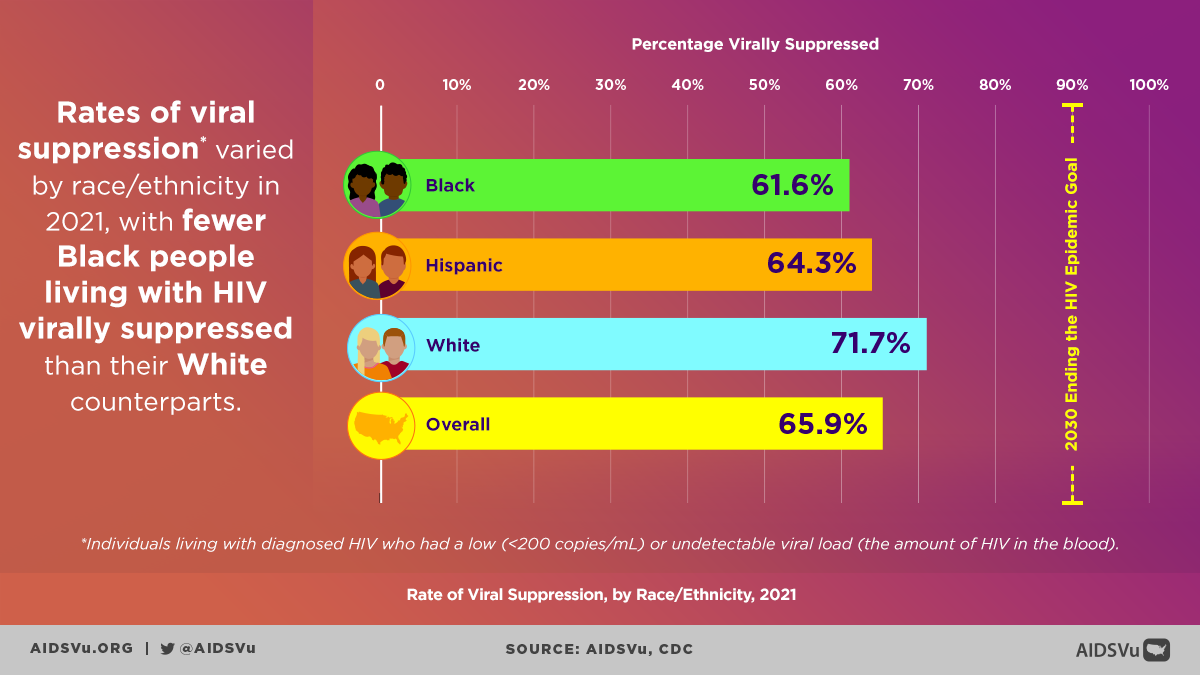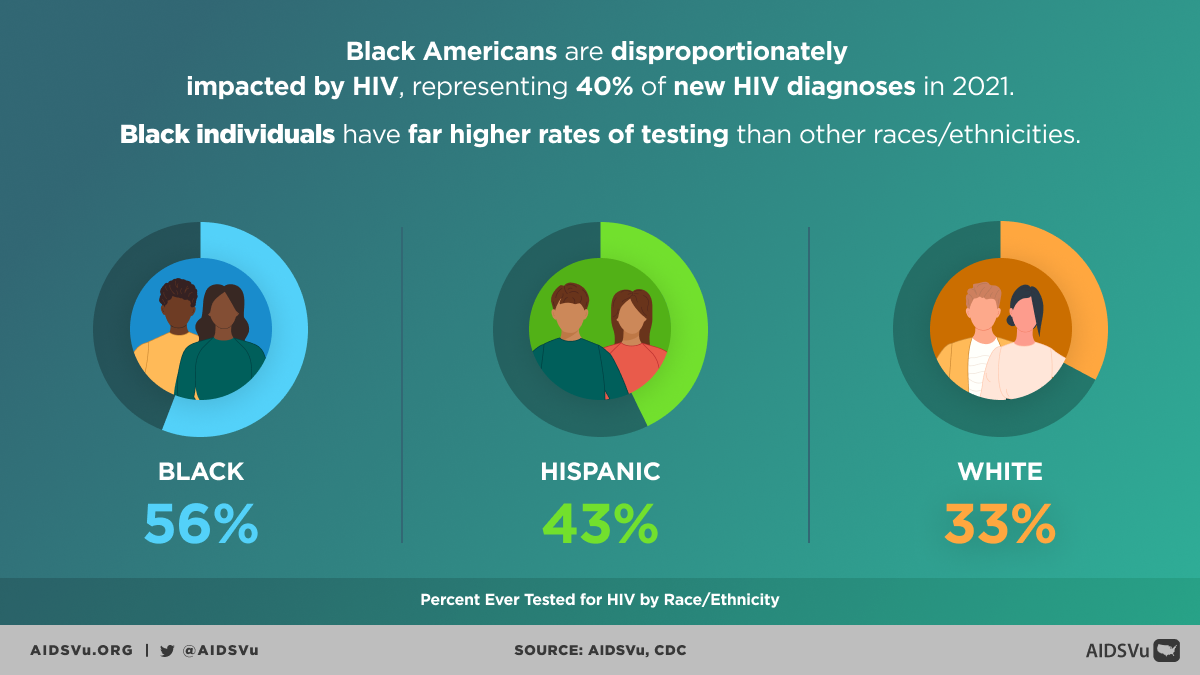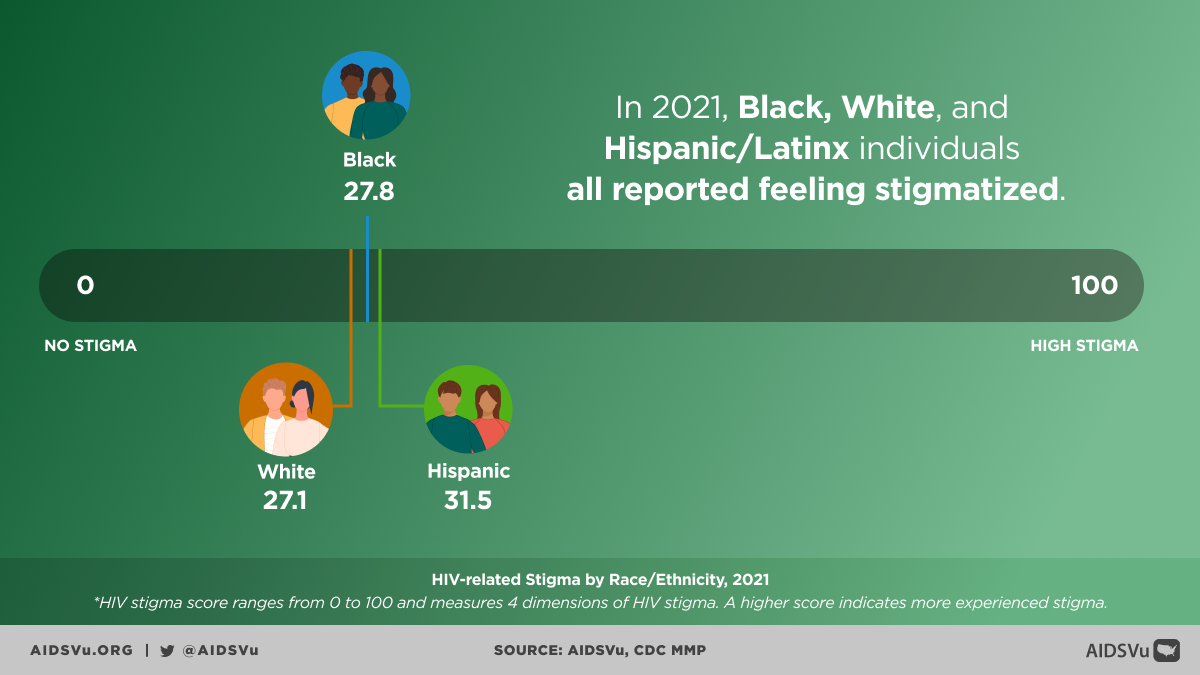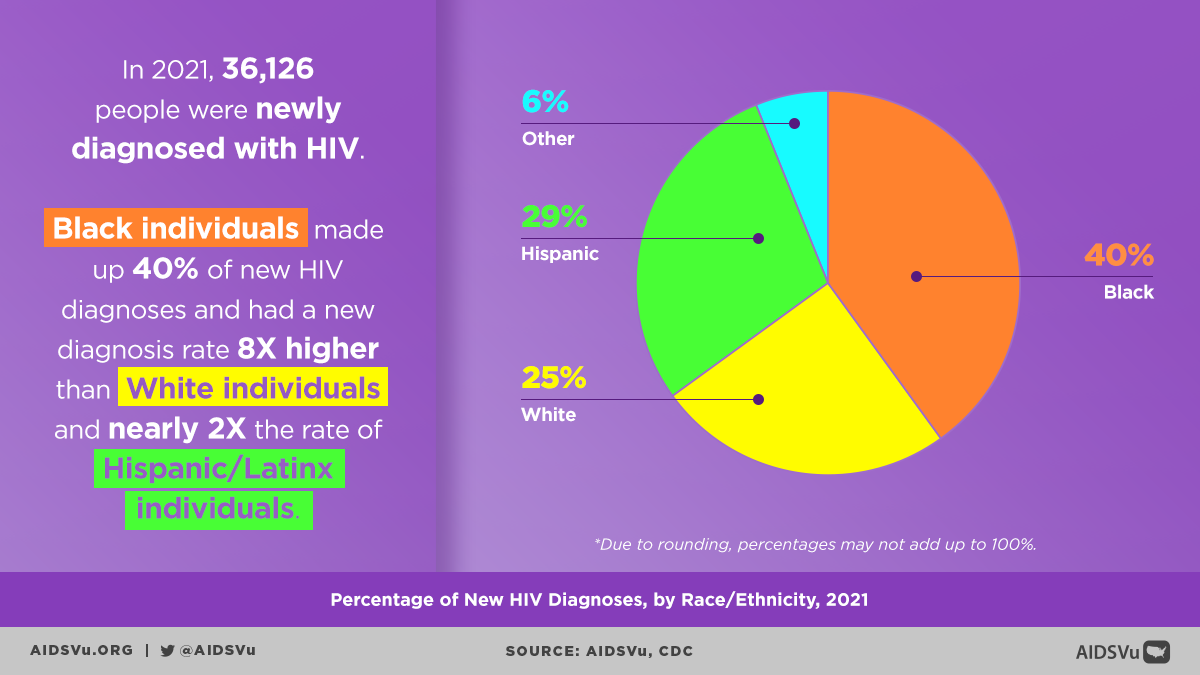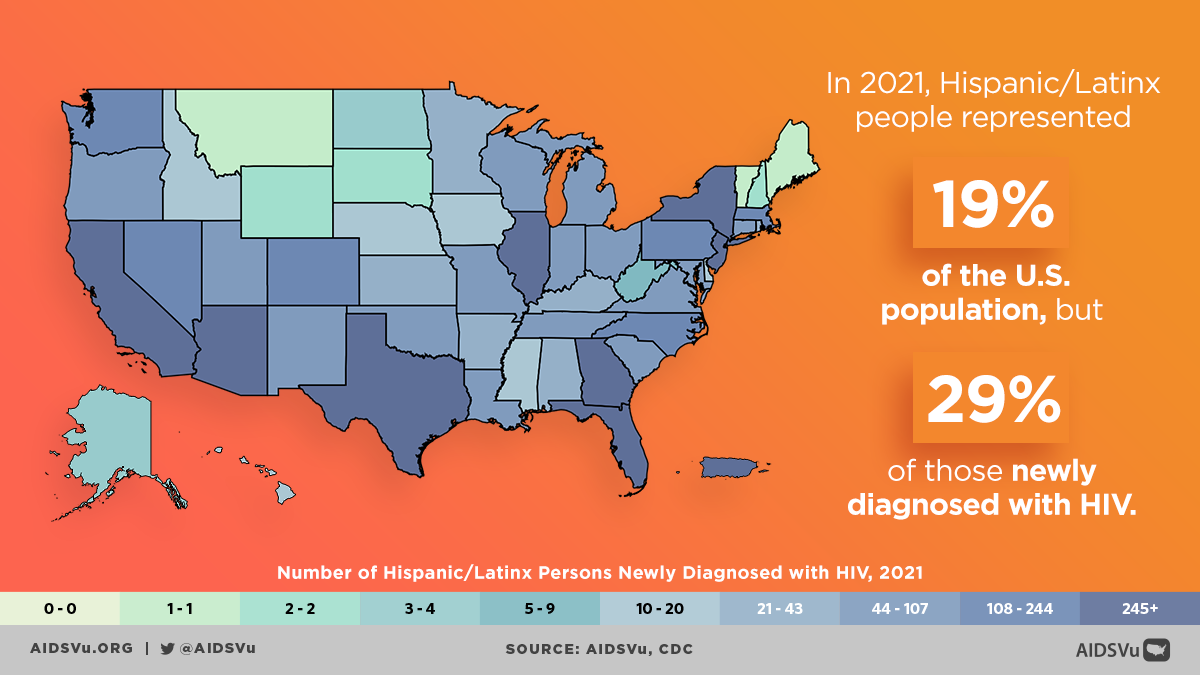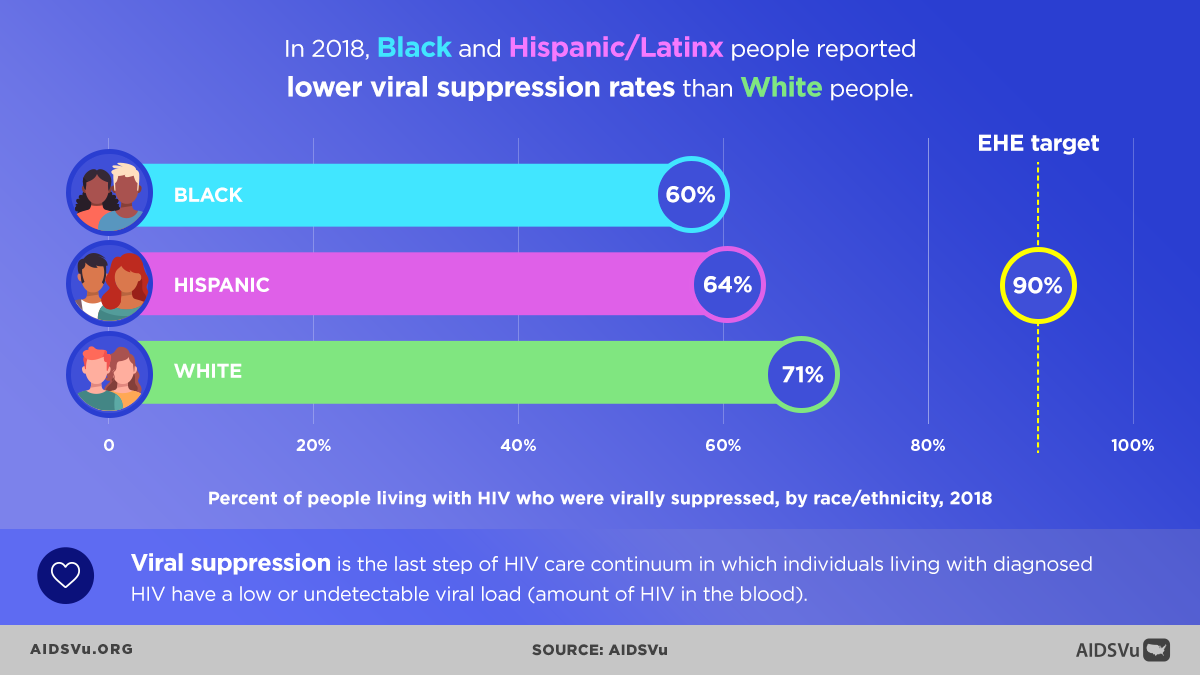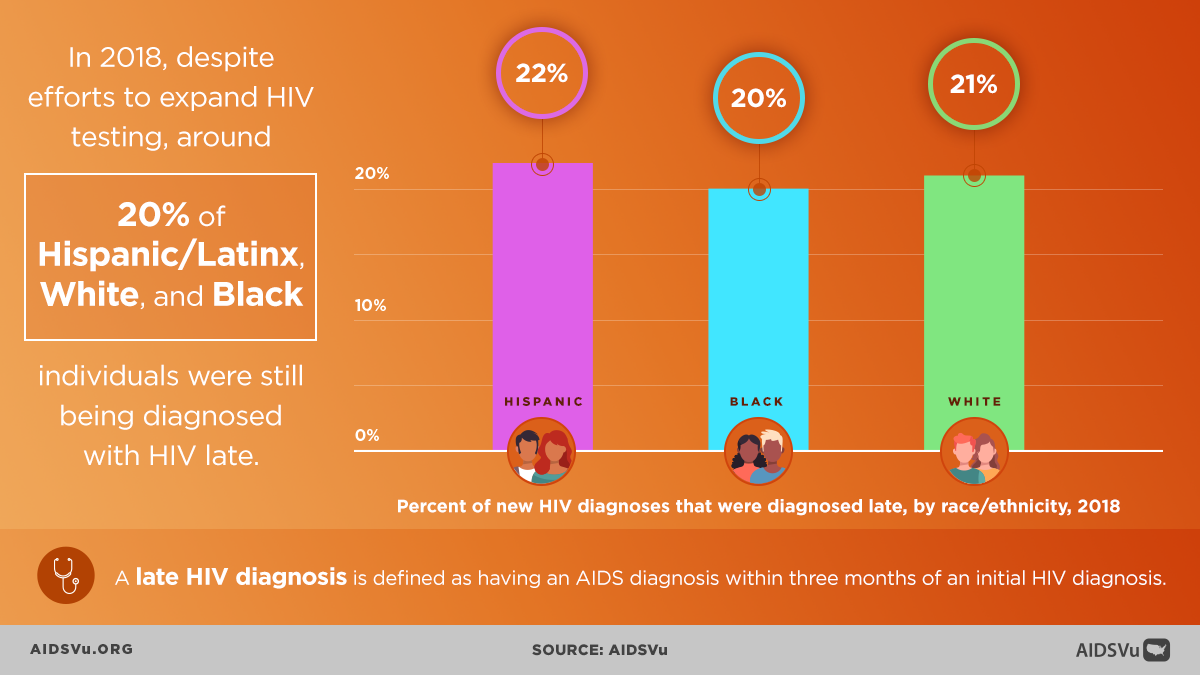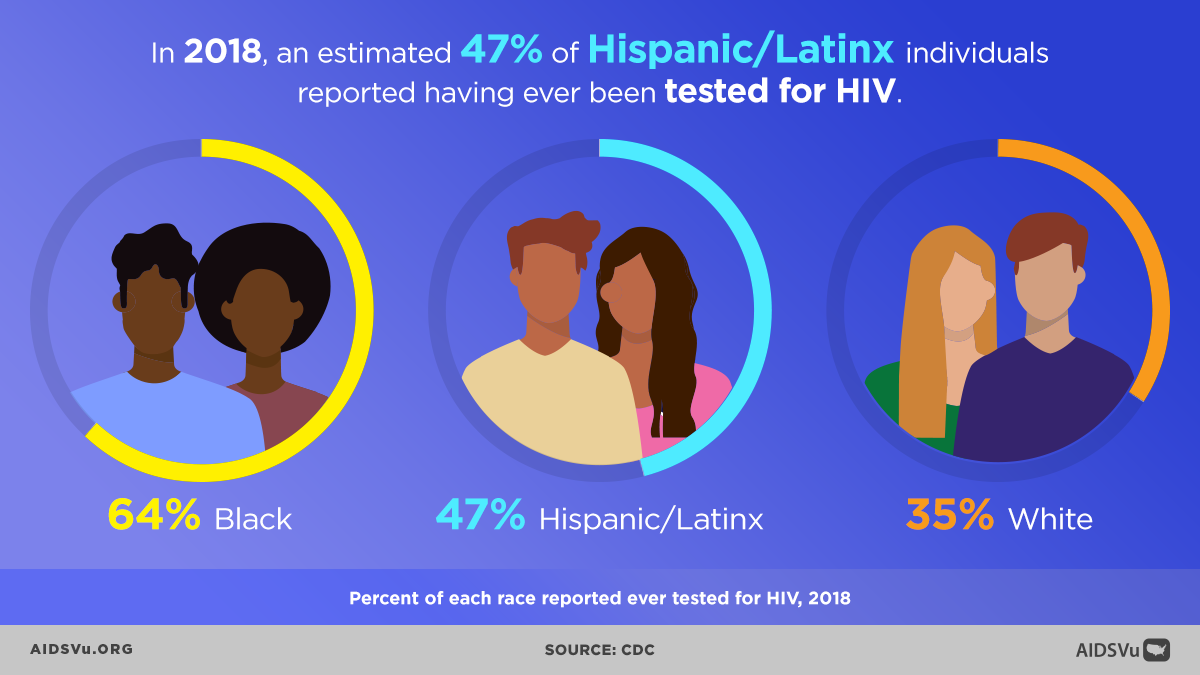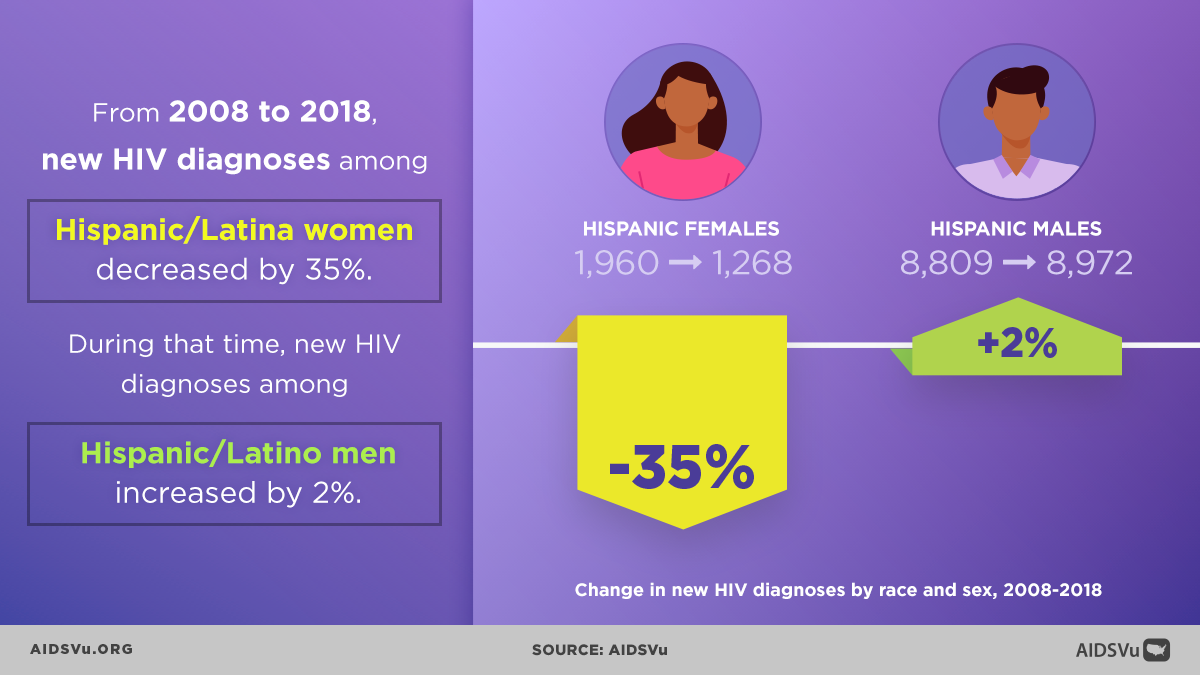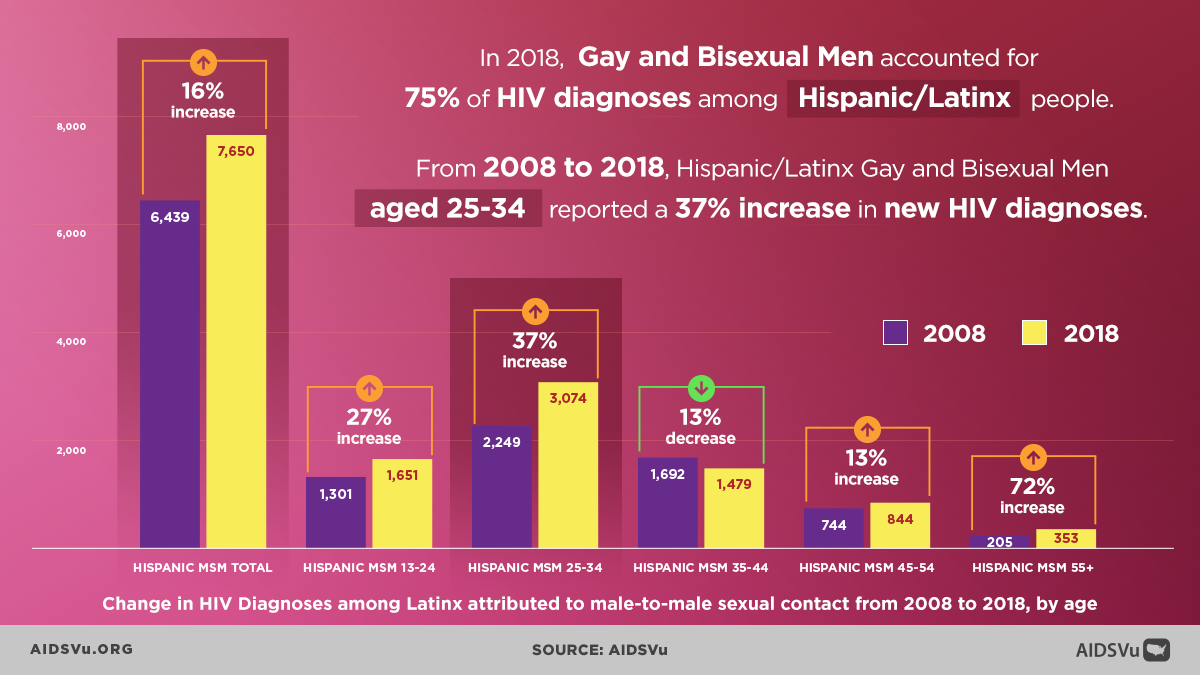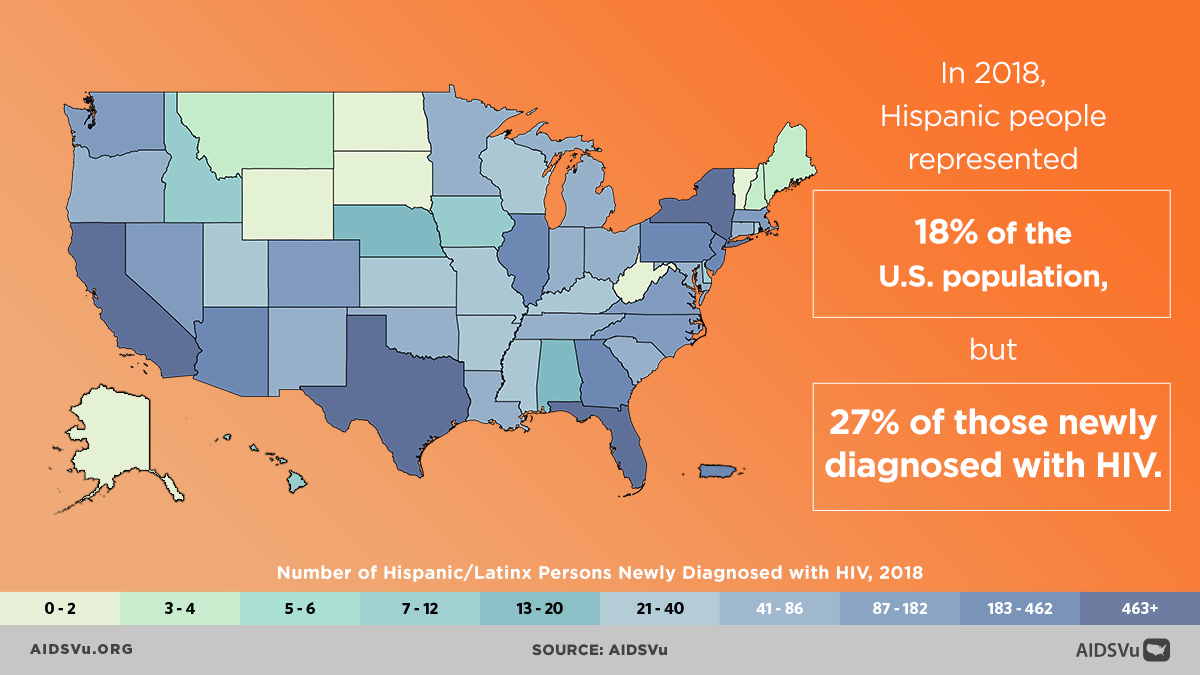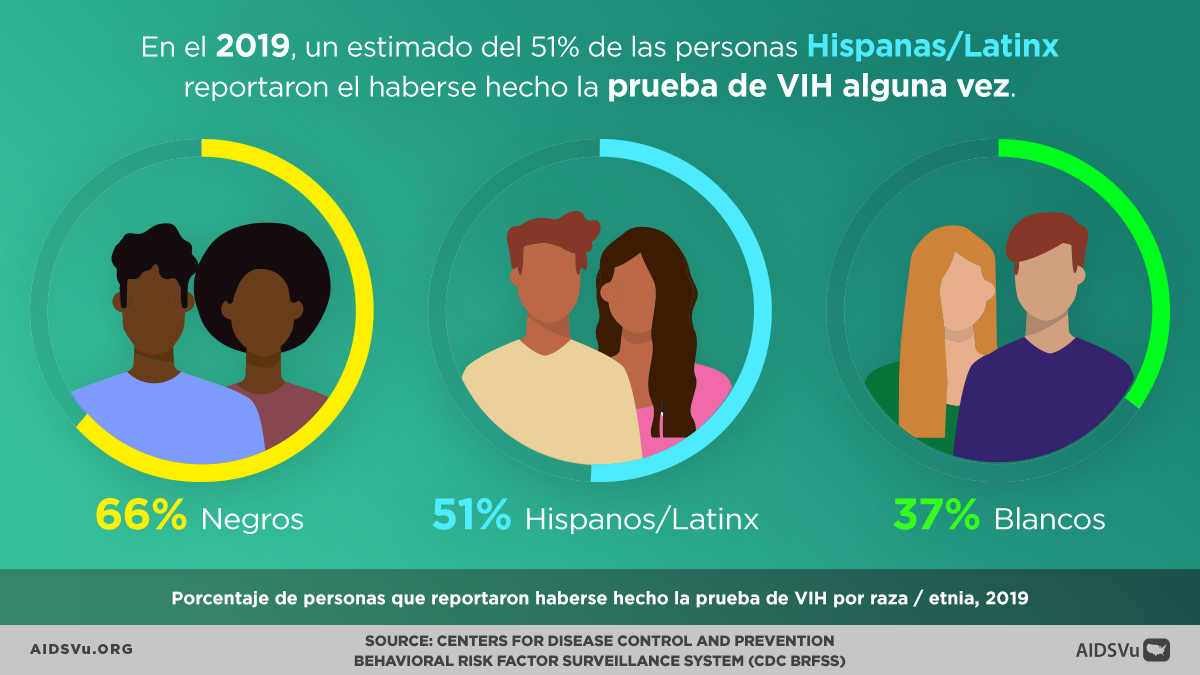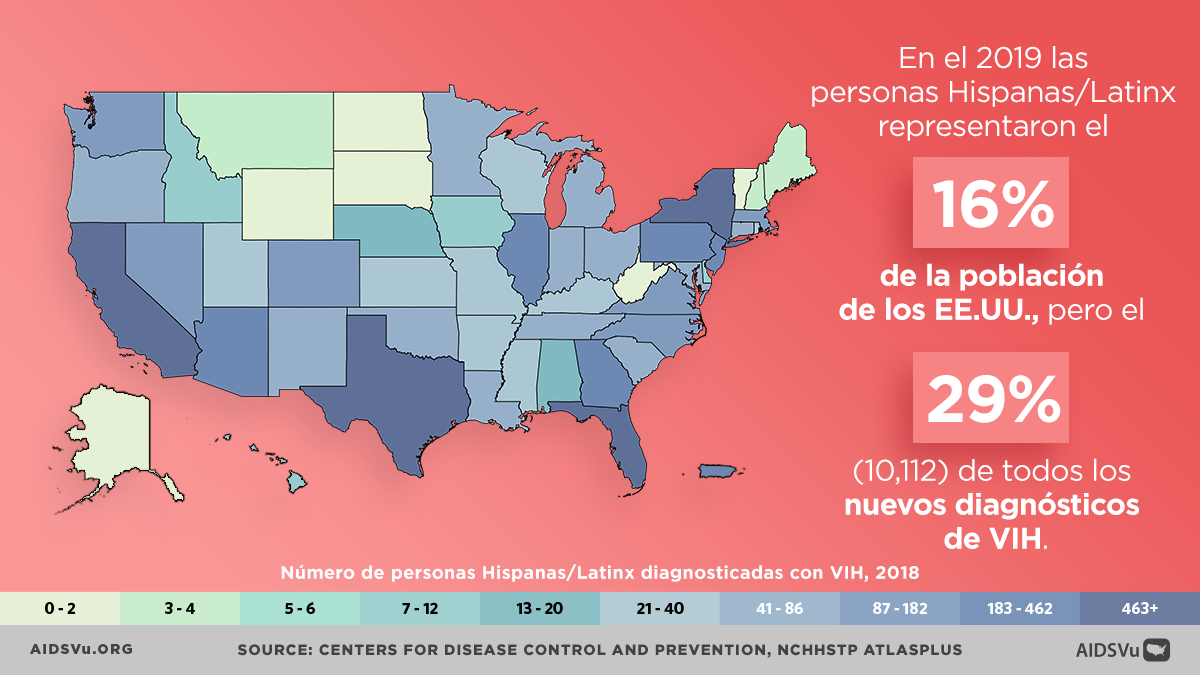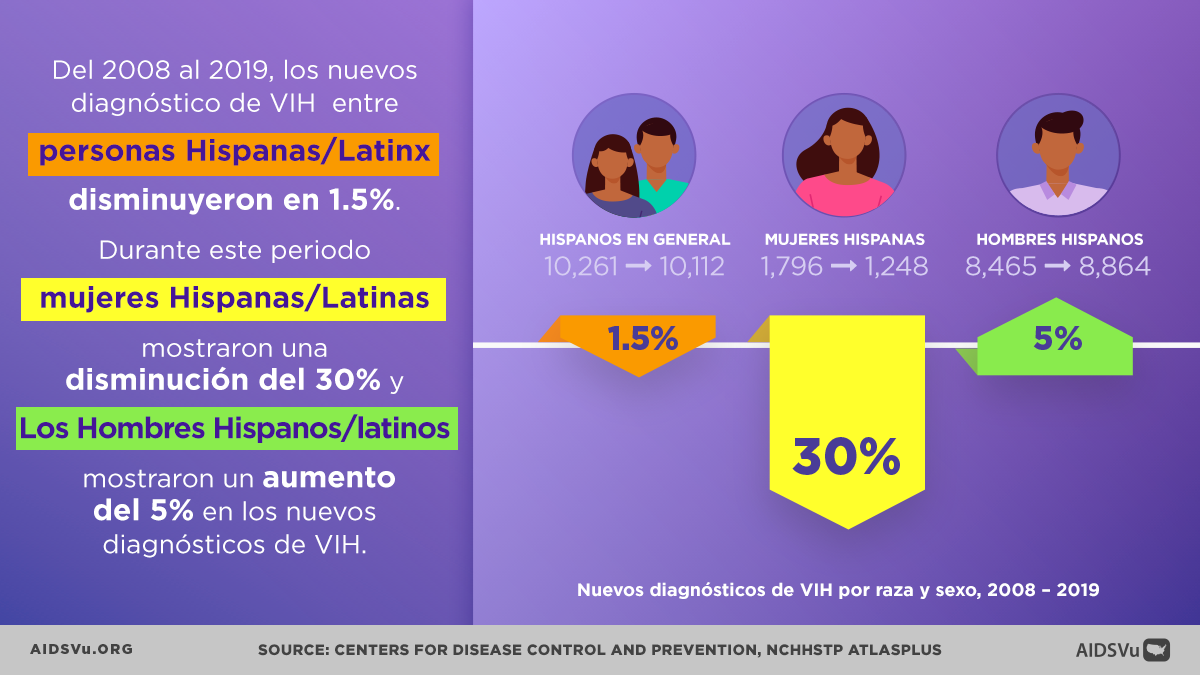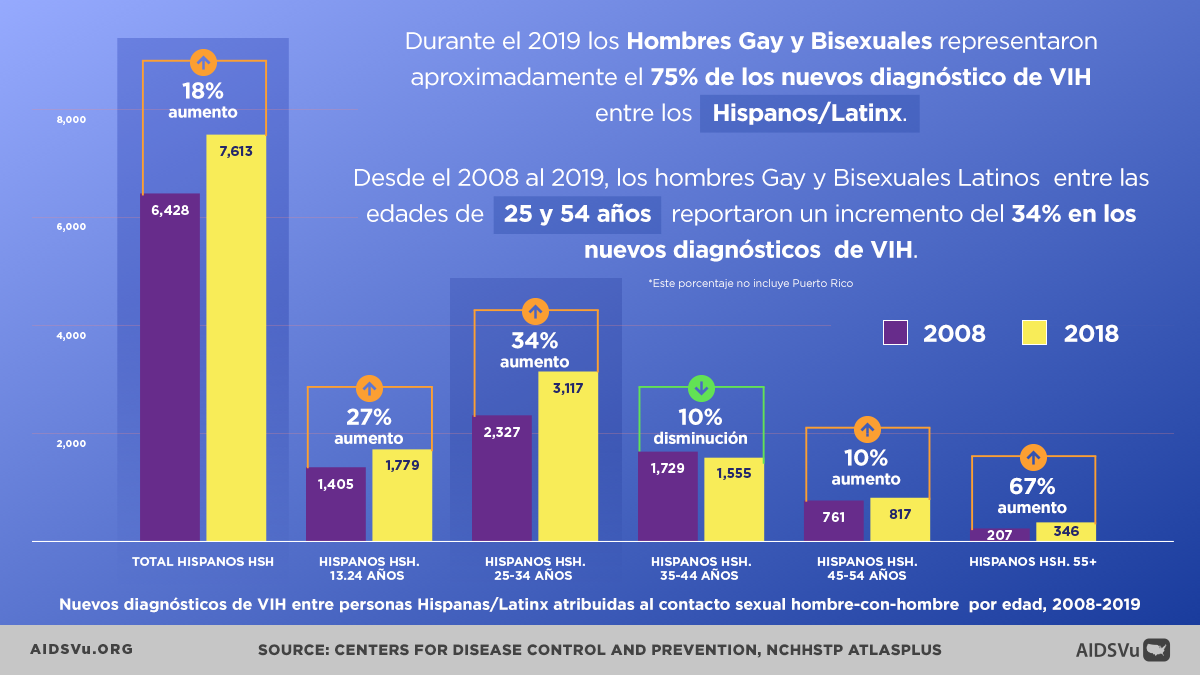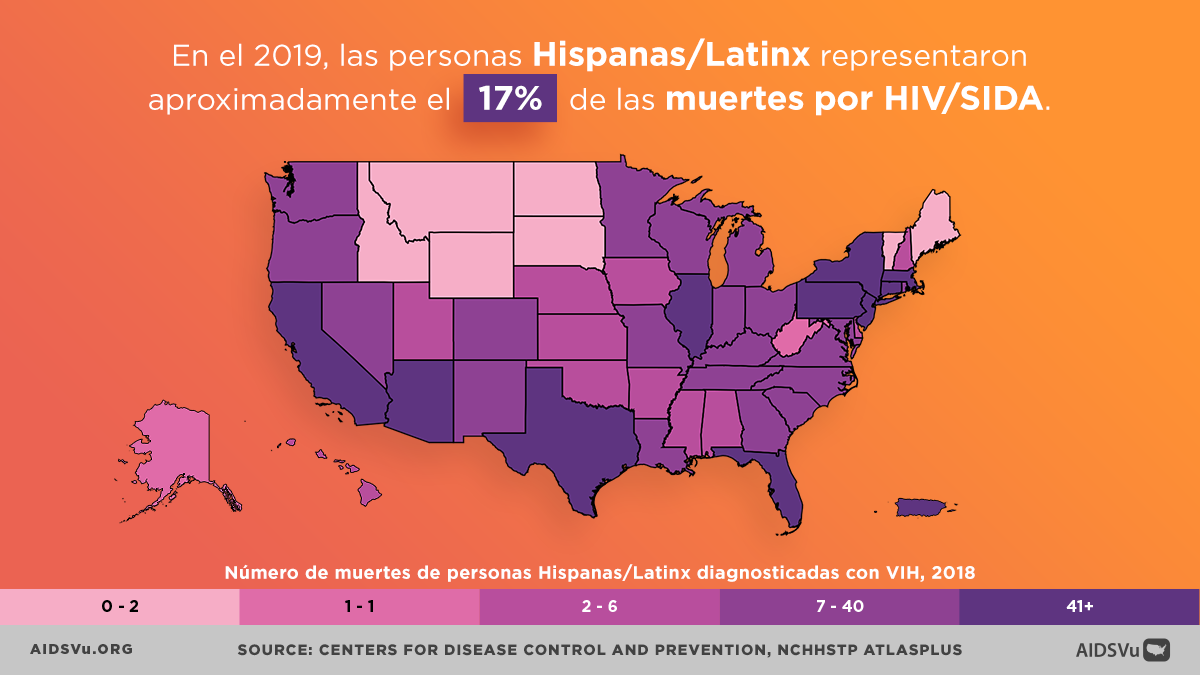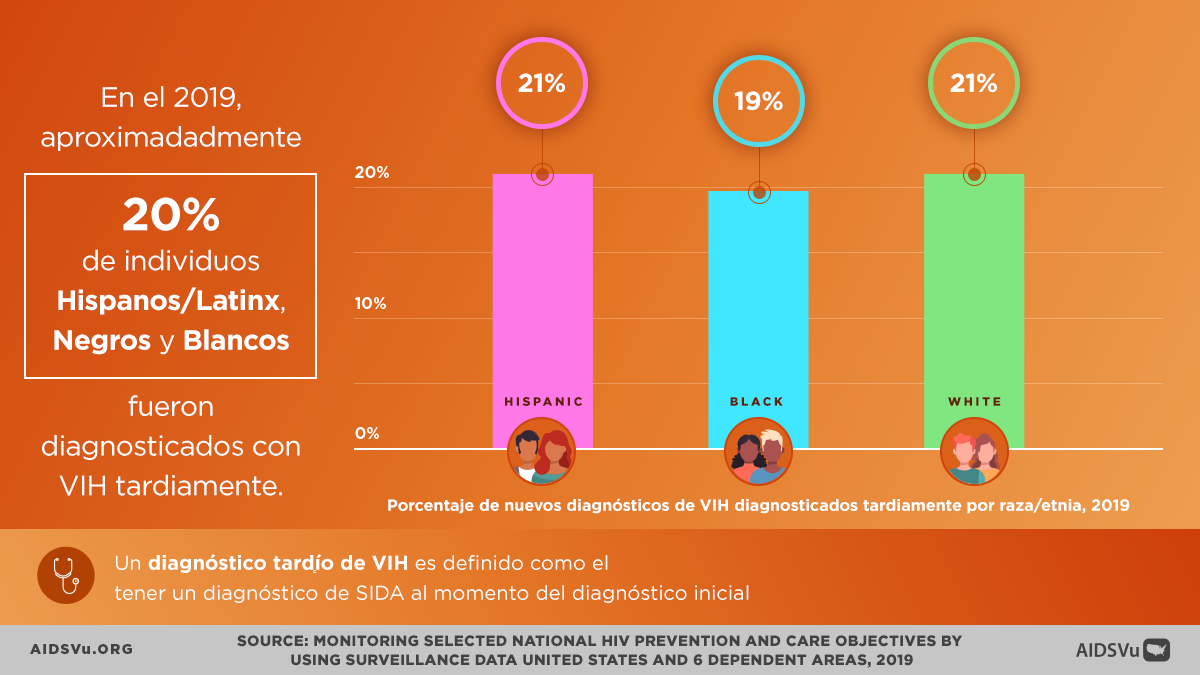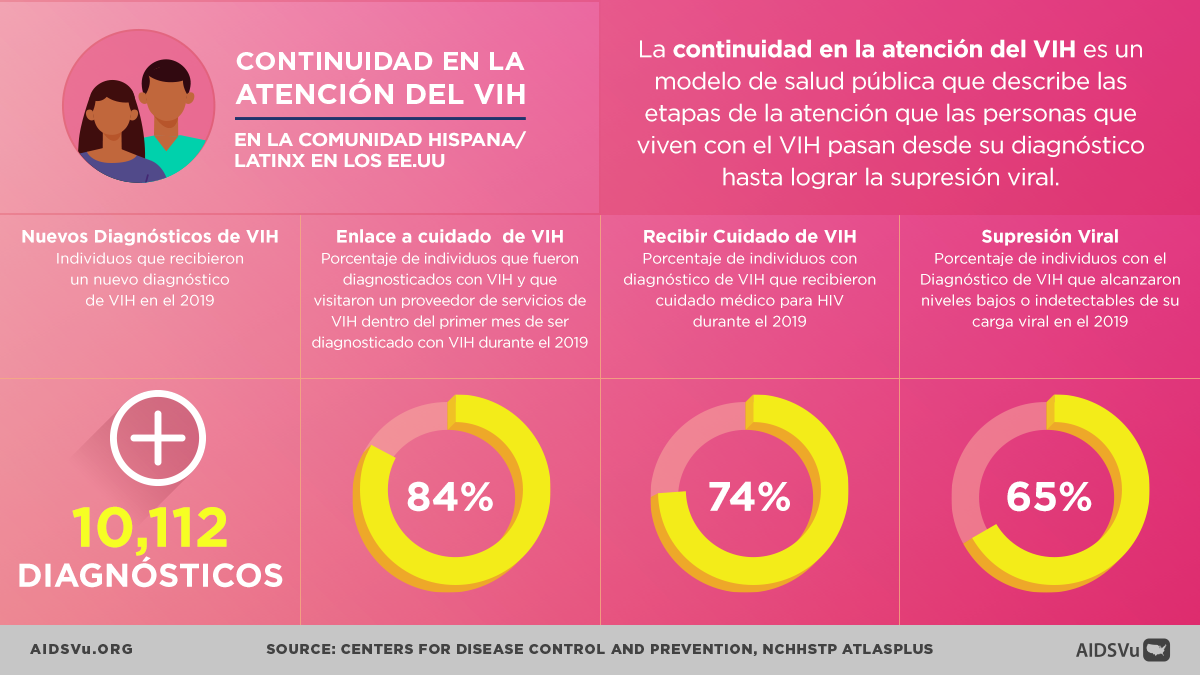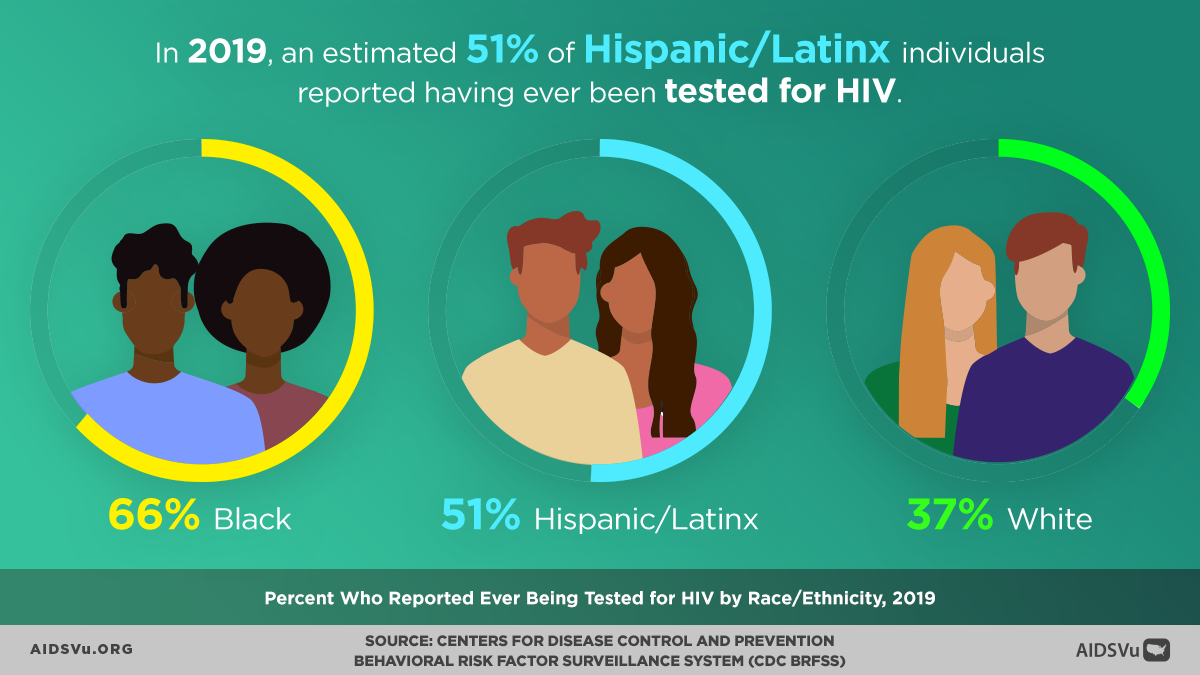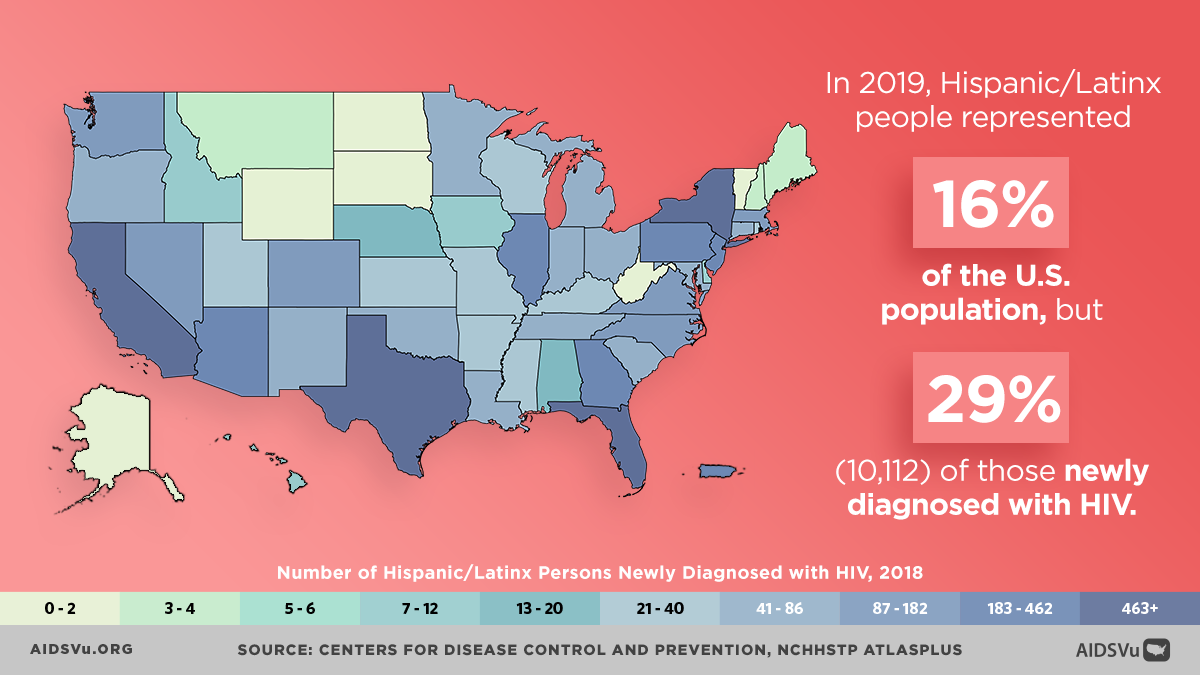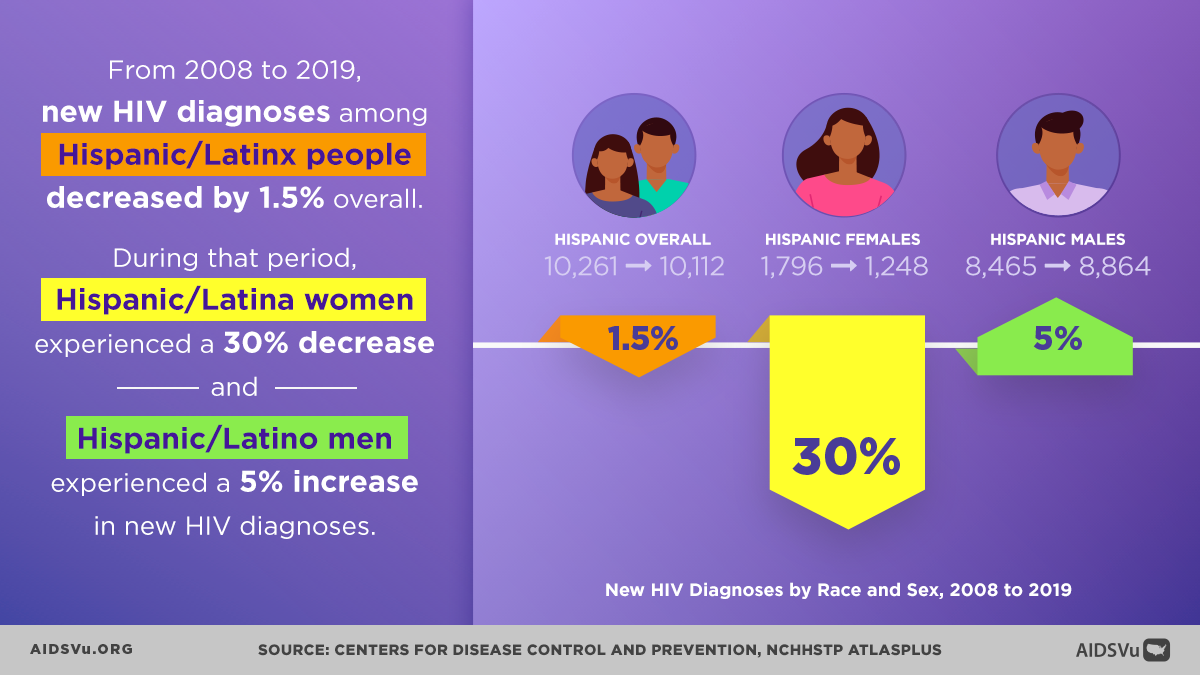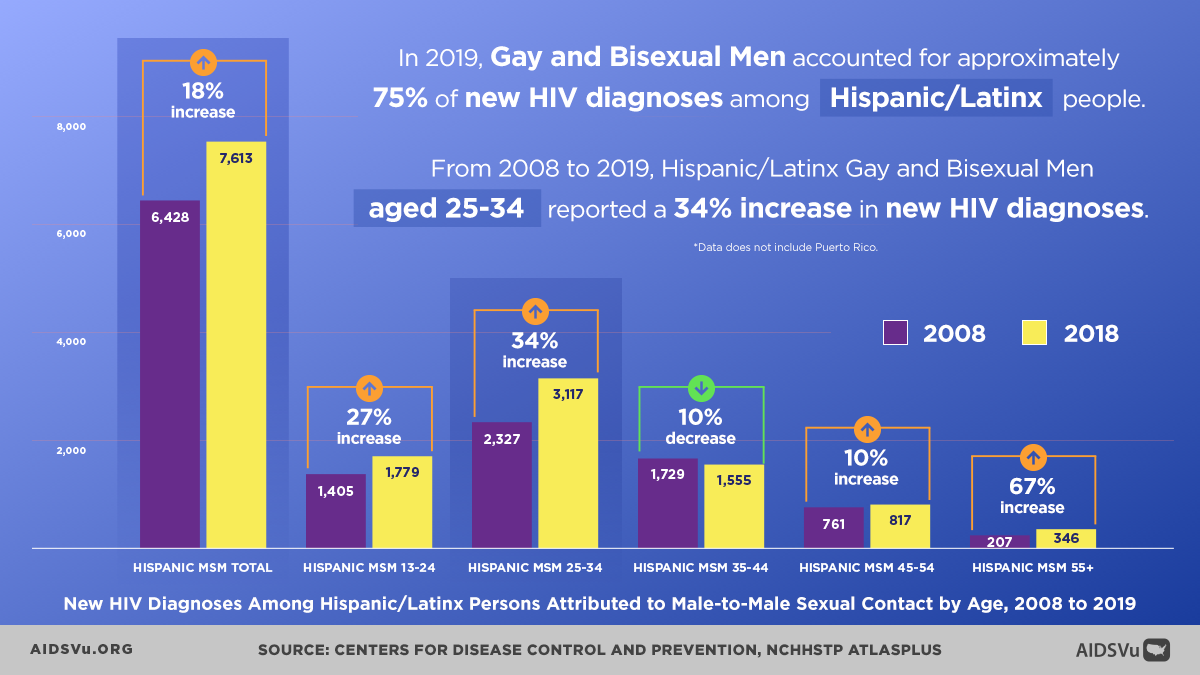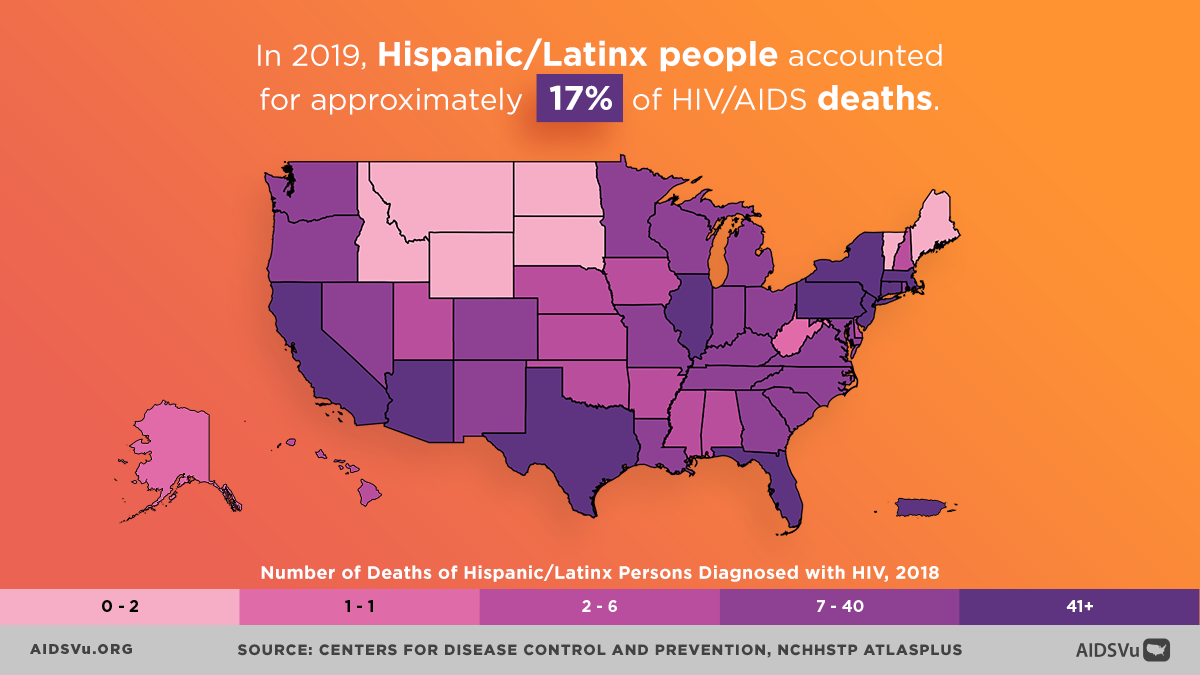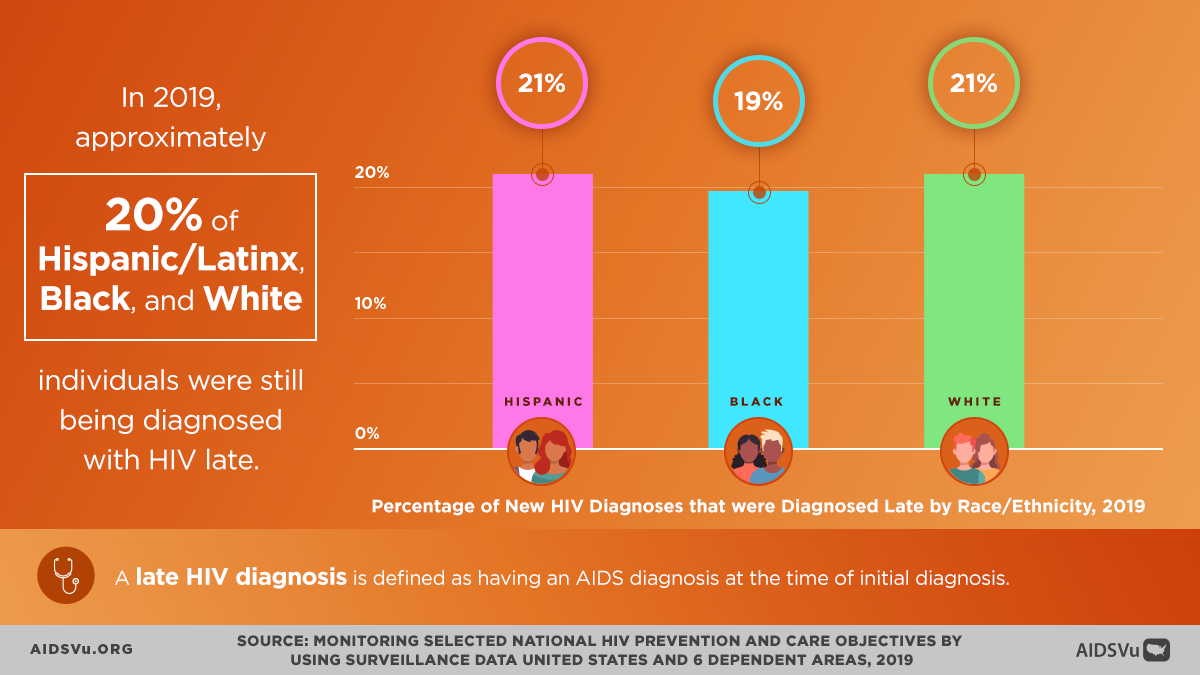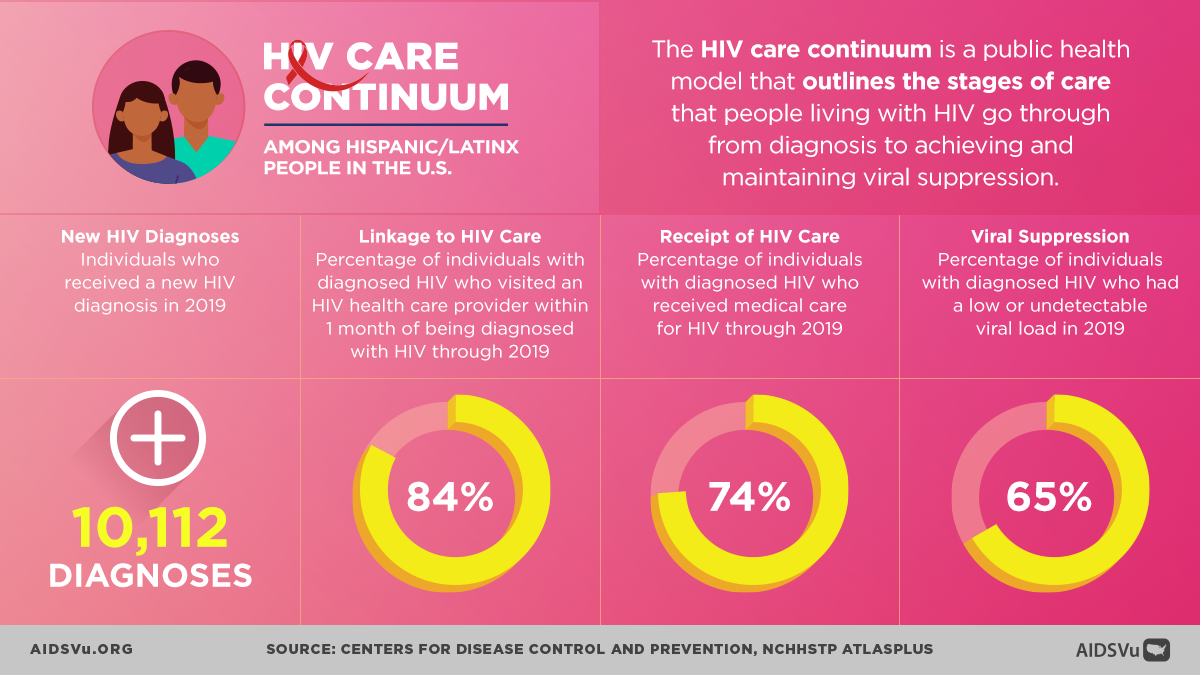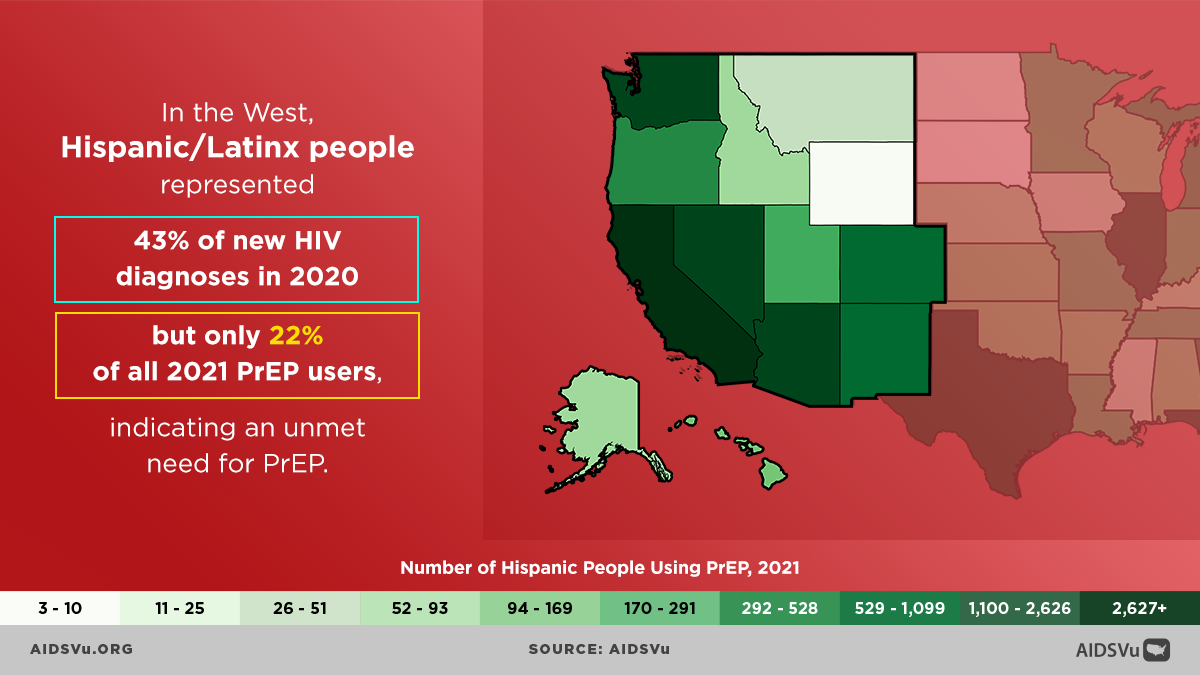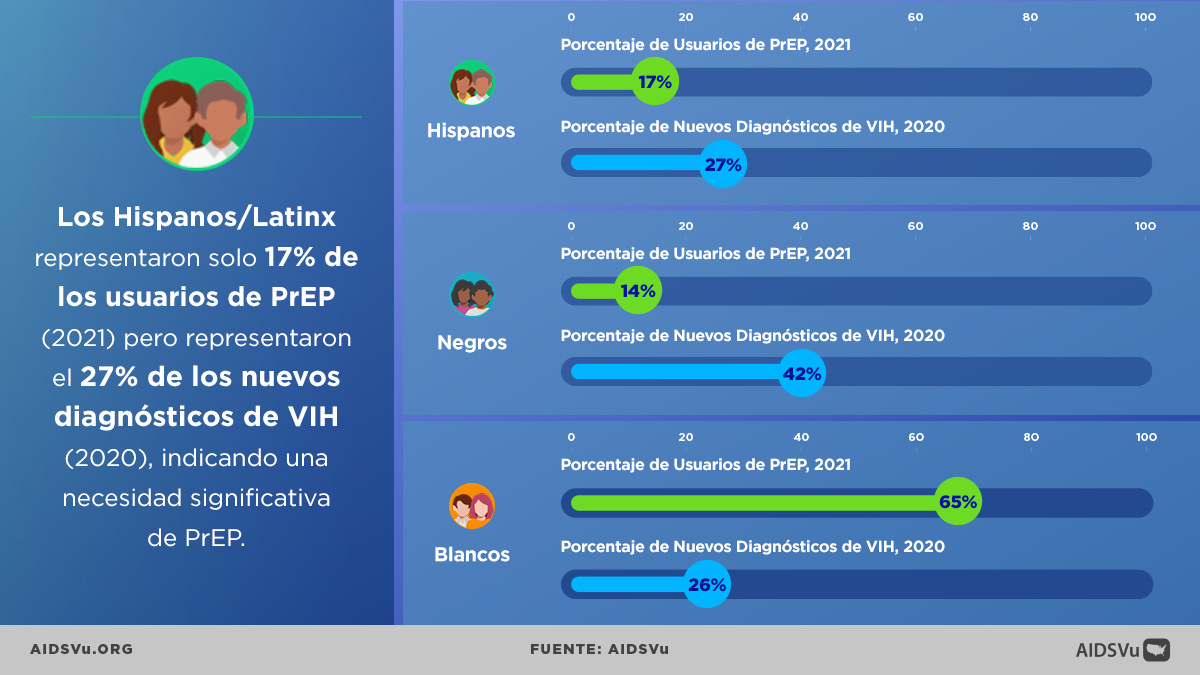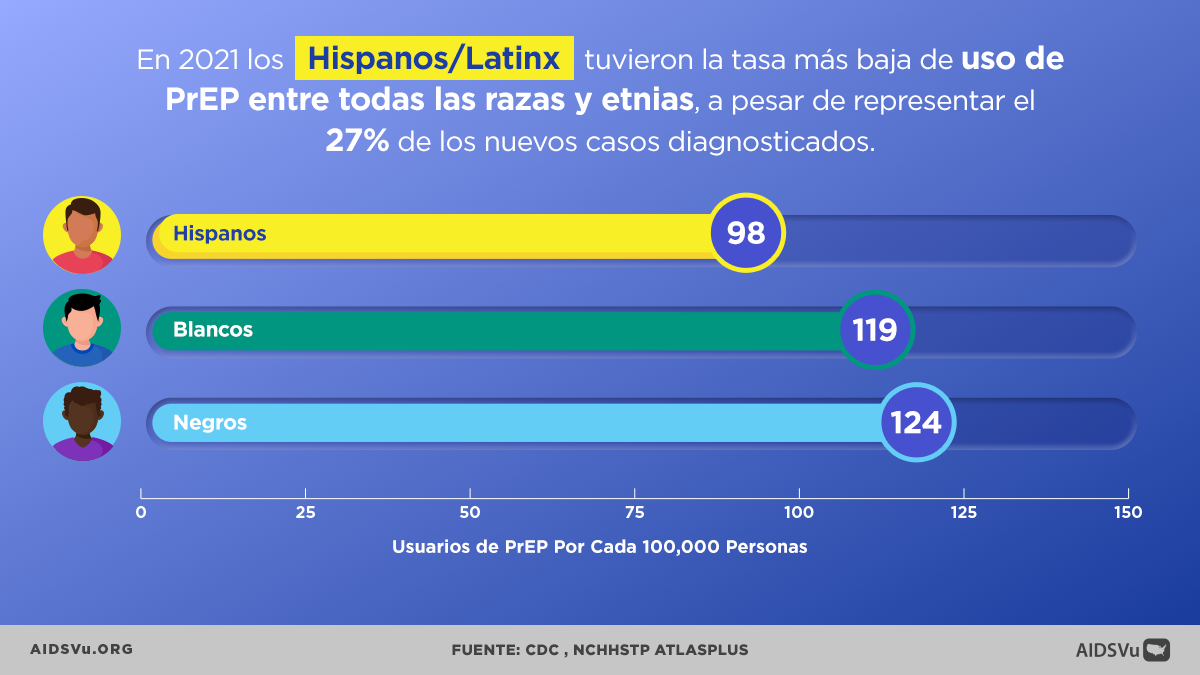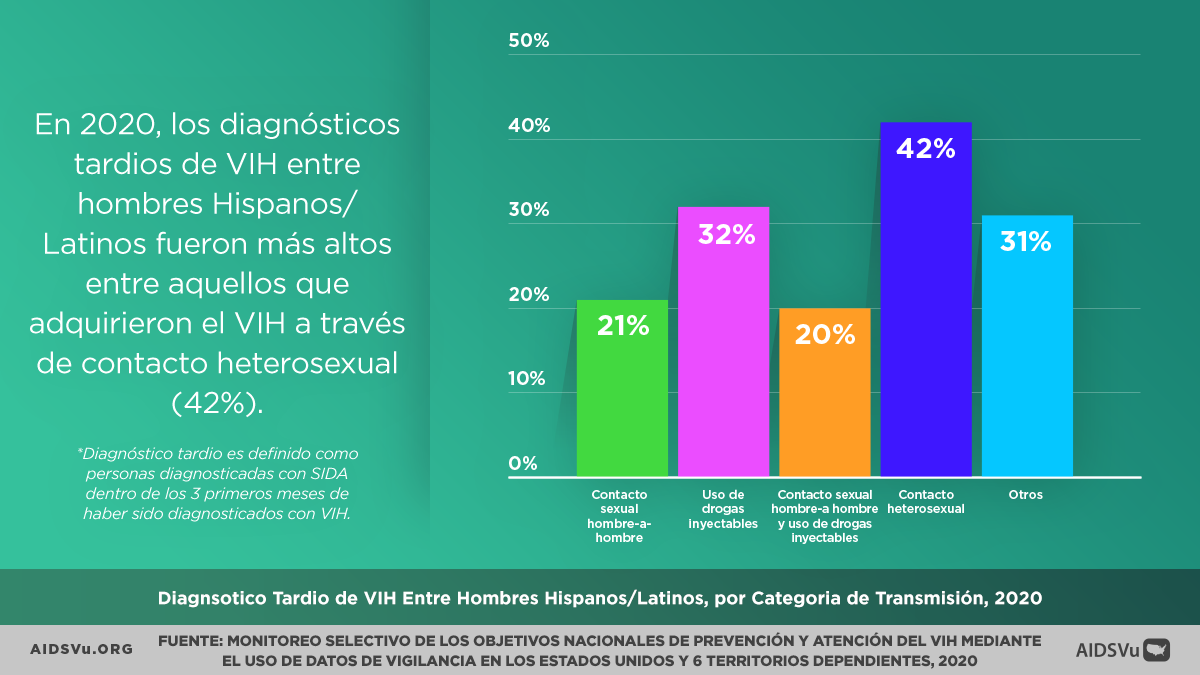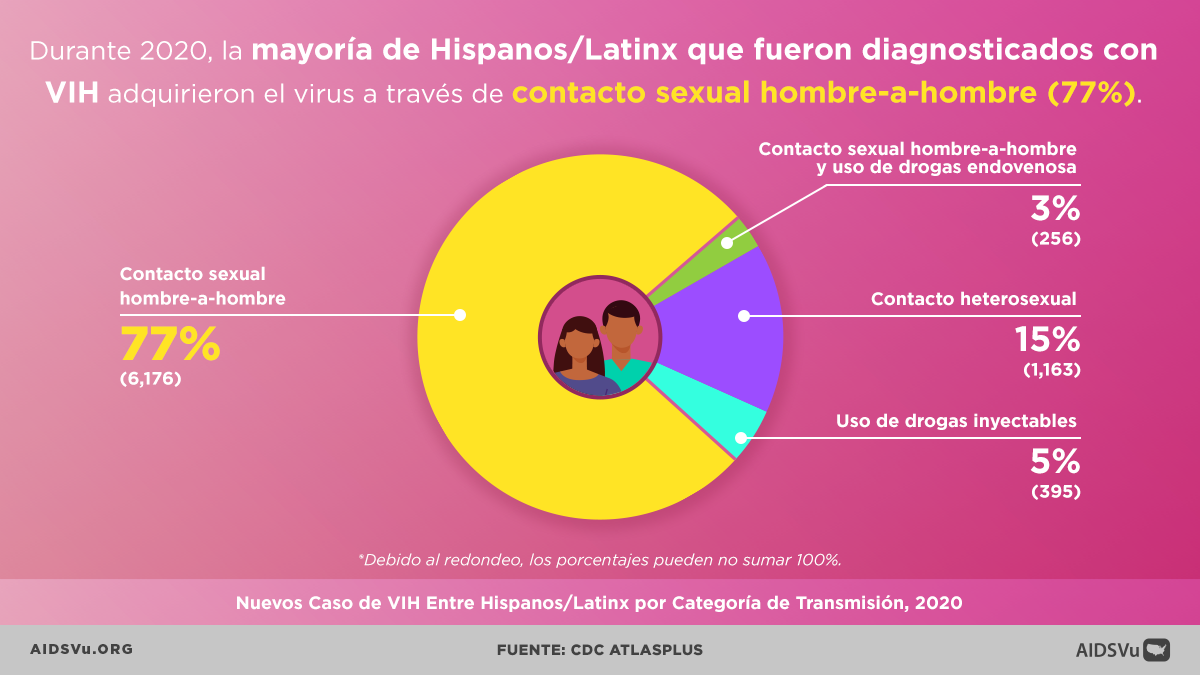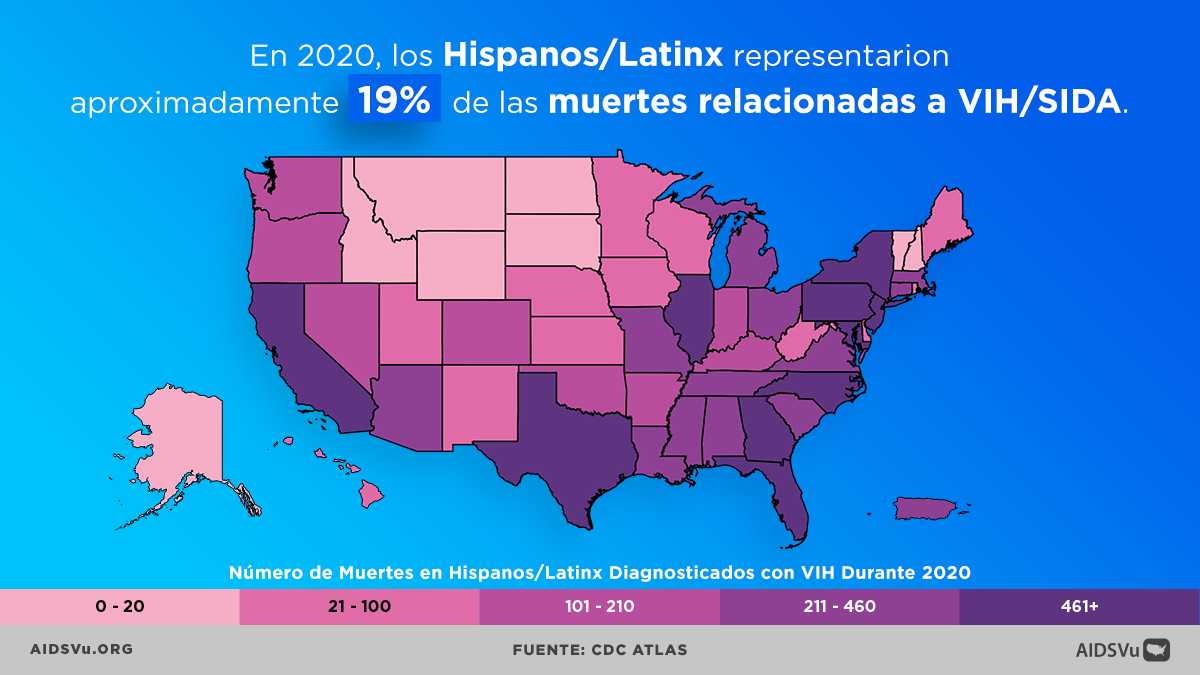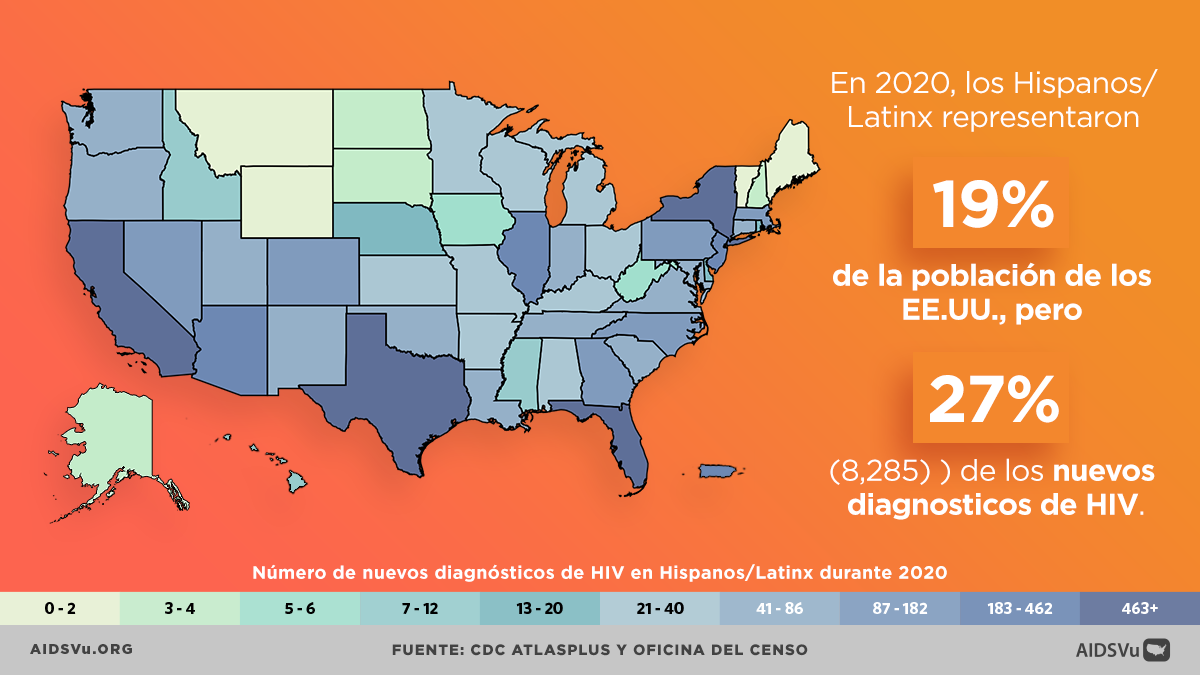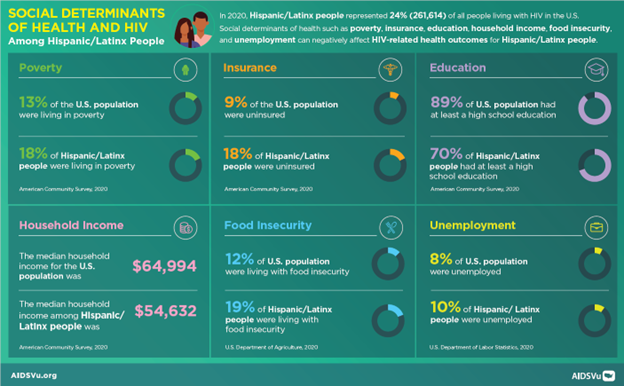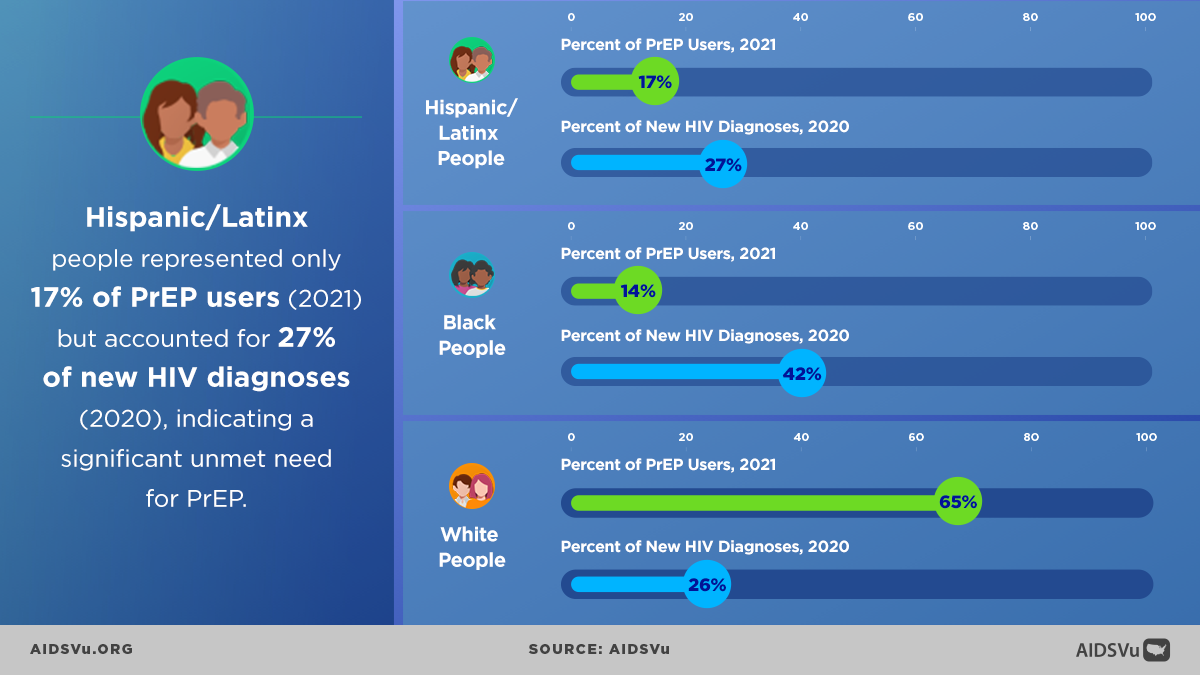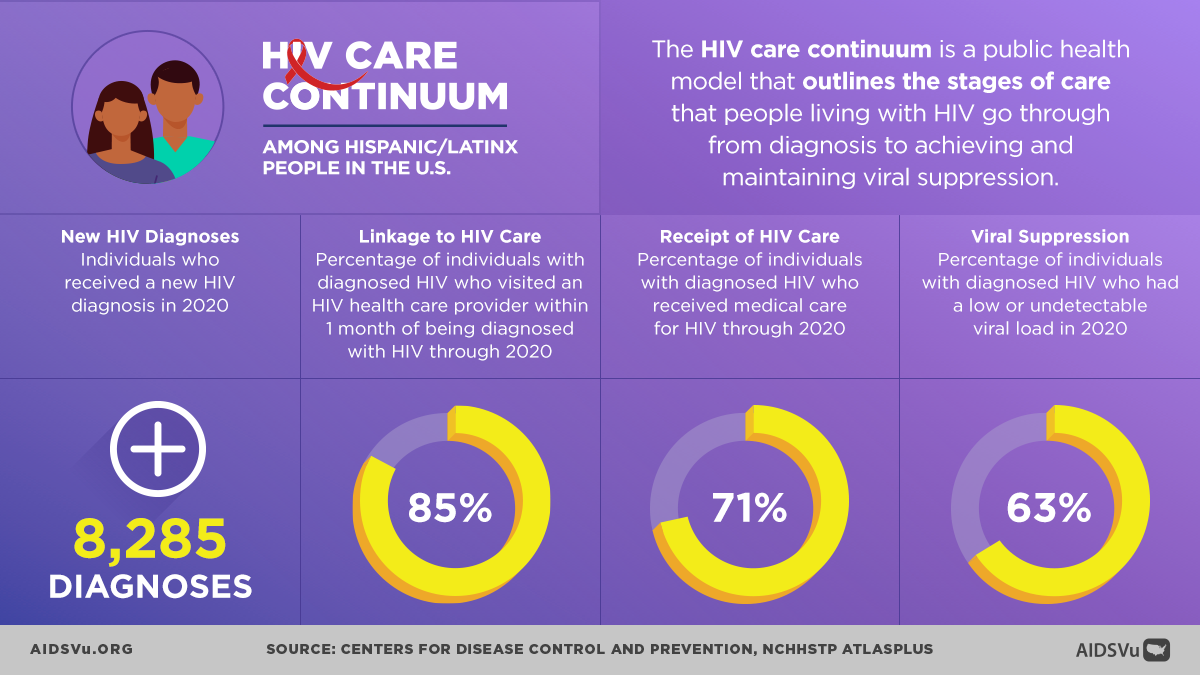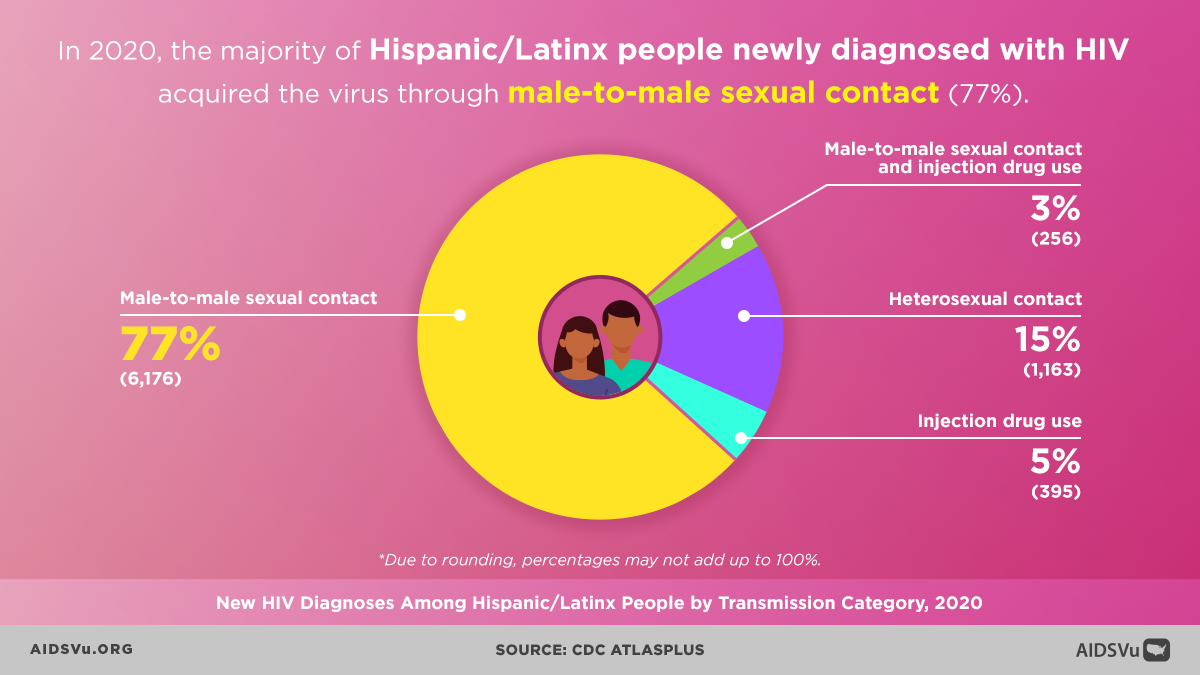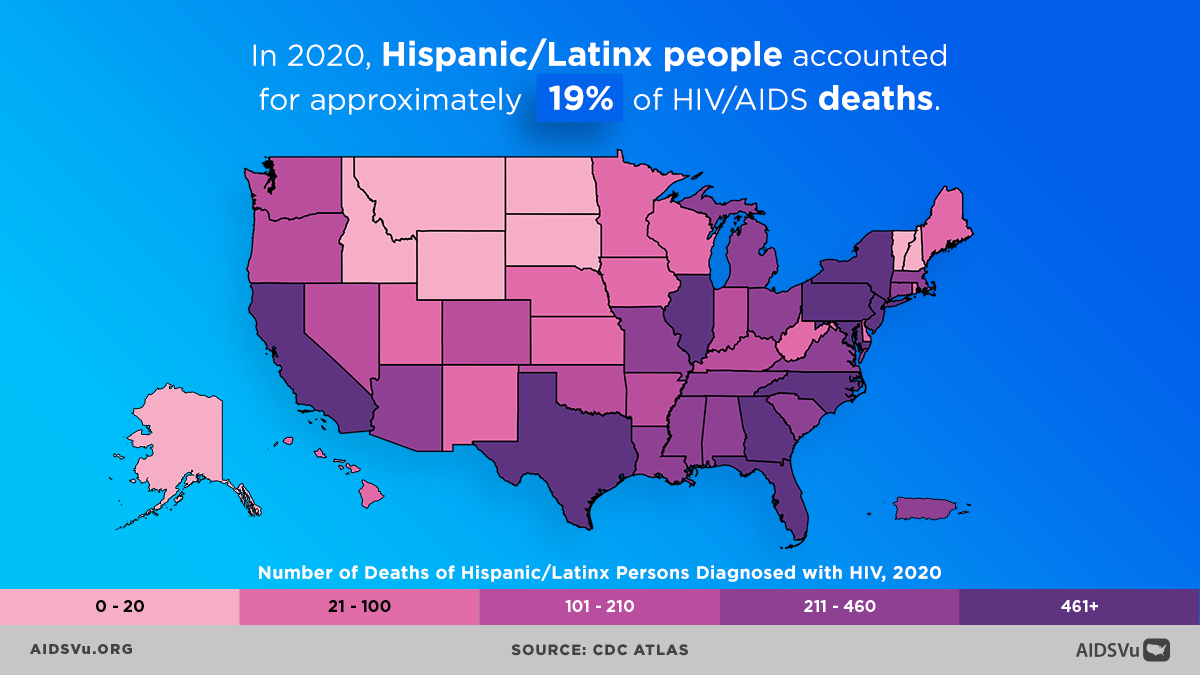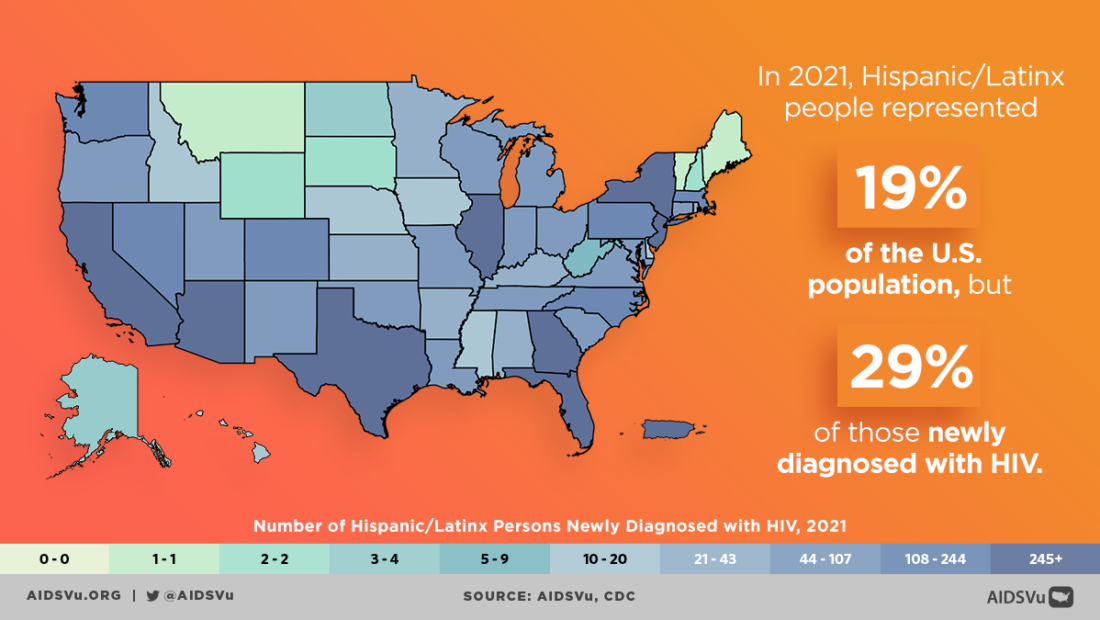
HIV has a disproportionate impact on the Hispanic/Latinx population. In 2021, Hispanic/Latinx people represented 29% of new HIV diagnoses, despite making up only 19% of the U.S. population. The Hispanic/Latinx community faces unique cultural and societal challenges in HIV prevention, treatment, and care, including language barriers and mistrust of the health care system.
These challenges can also delay HIV testing and necessary treatment. In 2021, 23% of new HIV diagnoses among Hispanic/Latinx people were diagnosed late, meaning those individuals were diagnosed with stage 3 HIV (AIDS) within 3 months of their initial HIV diagnosis. In the same year, only an estimated 45% of Hispanic/Latinx individuals reported ever being tested for HIV. Research also suggests that undocumented Hispanic/Latinx immigrants are also more likely to be diagnosed late.
Health Disparities among Hispanic/Latinx People
HIV-related health disparities are significant among Hispanic/Latinx communities. Not only are Hispanic/Latinx people disproportionately impacted by HIV, but they also experience social determinants of health that often lead to poorer health outcomes. For example:
- In 2021, 18% of Hispanic/Latinx people in the U.S. were living in poverty, compared to 13% of the overall U.S. population
- In 2021, 18% of Hispanic/Latinx people lacked health insurance, compared to just 9% of the overall U.S. population
- In 2021, 3% of all Hispanic/Latinx people in the U.S. were living with food insecurity, compared to 12% of the overall U.S. population.
Additionally, concern for immigration status can place pressure on many minority and immigrant communities to avoid health services because they fear the impact that an HIV diagnosis can have on their residential security in the U.S. (CDC).
Beyond the Map
AIDSVu offers tools and resources beyond the HIV map that provide users with a deeper understanding of the HIV epidemic, its socioeconomic-driving factors, and services available at the community level.
Social Determinants of Health
See how HIV prevalence is related to poverty, high school education, median household income, etc.
Learn MoreFind Services
Use the testing, Pre-Exposure Prophylaxis (PrEP), and other HIV services locators to find critical HIV/AIDS services near you.
Learn MoreLocal Data
View city and state profiles with local HIV/AIDS statistics, national comparison charts, and local resources.
Learn More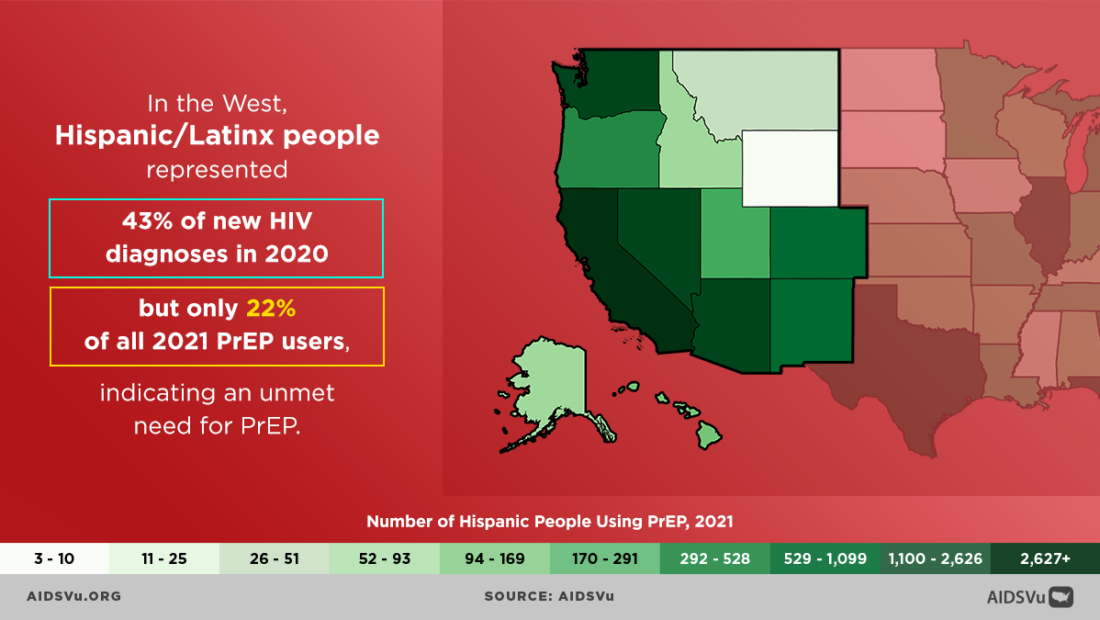
PrEP use among Hispanic/Latinx Communities
PrEP, or pre-exposure prophylaxis, is when people at risk for HIV take or receive HIV medicine regularly to lower their chances of acquiring HIV. In 2022, Hispanic/Latinx people had the lowest rate of PrEP use among all races/ethnicities (115 PrEP users per 100,000 population), despite accounting for 27% of new HIV diagnoses.
Another measure of the relative need for PrEP in a population is the PrEP-to-Need Ratio (PnR), which is the ratio of the number of PrEP users to the number of people newly diagnosed with HIV. The PnR among Hispanic/Latinx people is four times lower than for white individuals, demonstrating a higher unmet need for PrEP in the Hispanic/Latinx community.
These disparities also vary by region. Depending on the region, the PrEP-to-Need Ratio among Hispanic/ Latinx individuals is 3-6 times lower than white individuals, demonstrating a higher unmet need among Hispanic/Latinx people.
5 Ways to Use AIDSVu
Explore Maps
Explore the interactive map, customize your view, and easily print for presentations, grant applications, or other materials.
Learn MoreView Local Statistics
View local statistics for your city or state, and download high-impact data visualizations for your work
Learn MoreDownload Data
Download the datasets that inform AIDSVu’s visualizations for your own research and analysis
Learn MoreLocate Services
Use AIDSVu’s service locators to find HIV testing, Pre-Exposure Prophylaxis (PrEP), and other HIV services near you
Learn MoreFor More Information
Learn more about the impact of HIV in Hispanic/Latinx communities with the following additional resources.


















